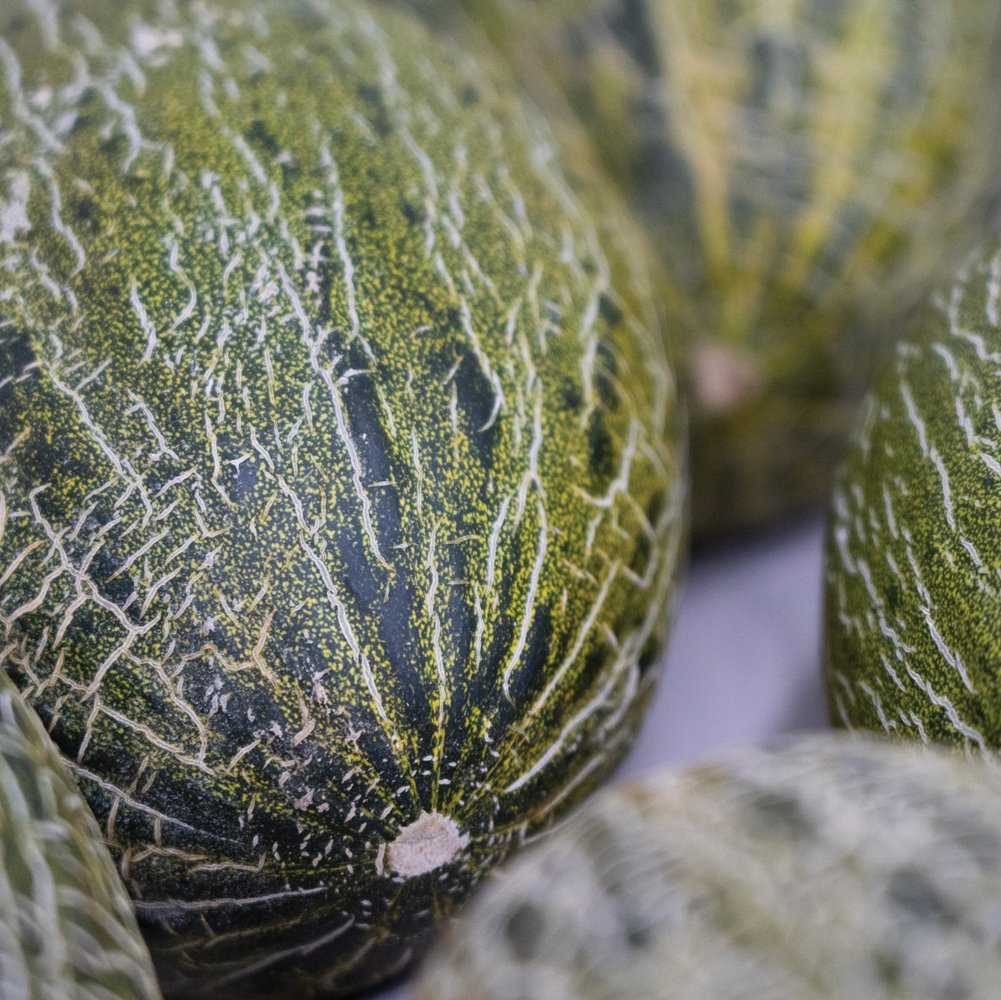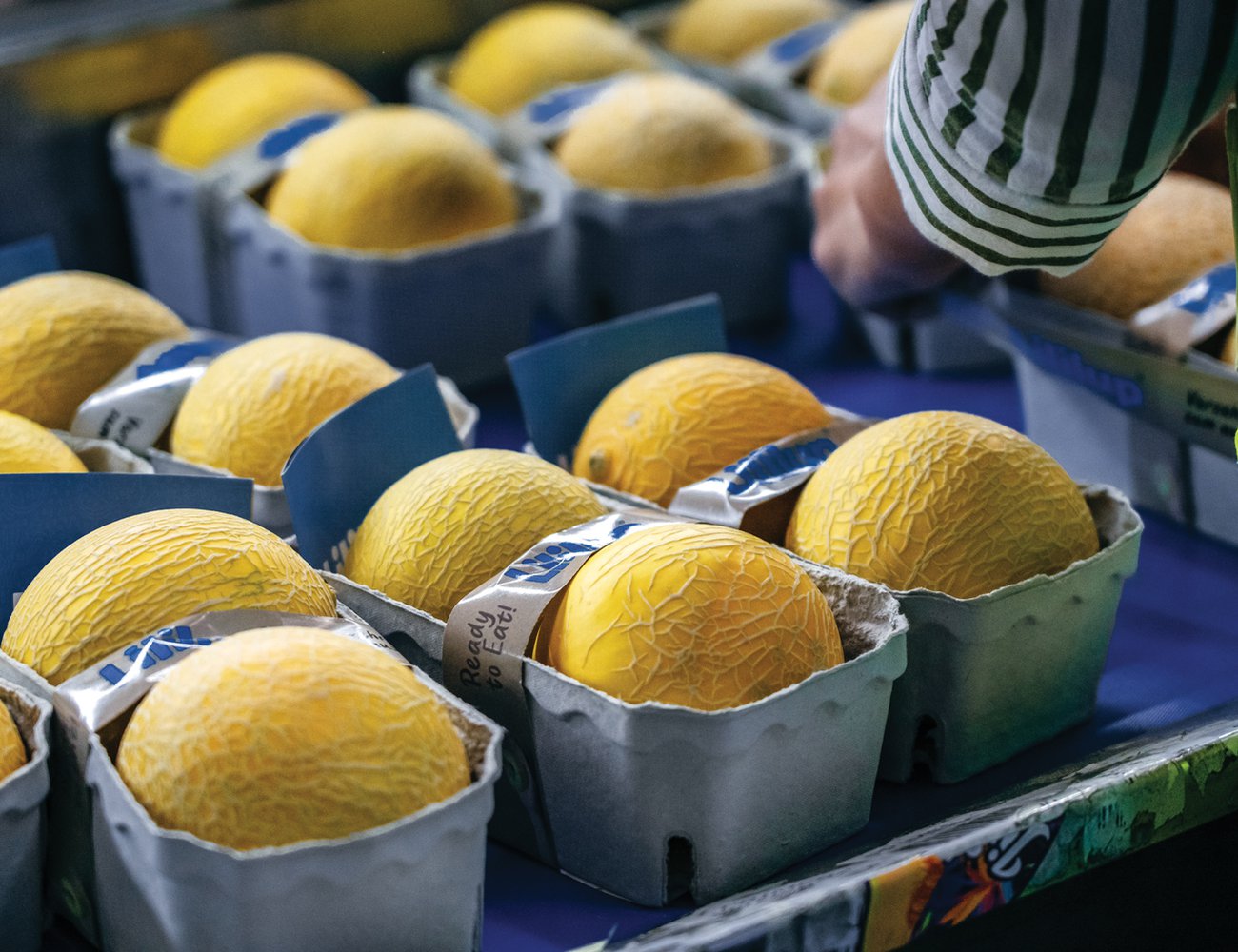The Campo de Cartagena area in southeast Spain boasts a unique microclimate and hectares upon hectares of fertile fields. Fruit farming is an age-old tradition in this region. And it’s there that JimboFresh – a family-owned company run by fourth-generation farmers – cultivates, packs and exports a variety of sweet, crisp and crunchy melons – some of which are exclusive to Spinneys. We visited CEO Miguel Ángel Jiménez, technical production manager Mónica González and sales manager Rafael Moreno to find out more…

Piel de sapo has a sweet aroma and mild flavour

The Lililup melon’s petite size makes it the ideal healthy snack
JimboFresh and its farms are mainly located in Cartagena. Why is this region ideal for growing melons?
Miguel Ángel: There are many reasons: the soil is fertile, the climate is unique to the region and the quality of water is good. The region is a real garden, or a haven, for growing melons. And we have skilled producers who have learnt from generations before them.
Mónica: Because of the fertile land, our melons have high natural sugar levels as well as tastes and aromas that you won’t find anywhere else.
What is your philosophy at JimboFresh?
Miguel Ángel: Our philosophy was instilled in us by our ancestors: we aim to bring back nostalgic flavours that we know consumers crave. When someone bites into one of our melons, we want to take them back to their childhood and remind them what fruit used to taste like. We’re passionate about producing melons. We’re not just selling a product; we’re selling an experience.
We’re passionate about producing melons. We’re not just selling a product; we’re selling an experience.
Are all your farms situated in Cartagena? And do you work with other producers?
Miguel Ángel: We produce 1,500 hectares of melons in Spain and work with 19 producers. In addition to this, we also have farms in Brazil, Senegal and Morocco – this allows us to grow and supply melons all year round.
Tell us about the harvest season in Spain? How long does it last and what does a typical day look like for your field hands?
Mónica: The harvest runs from June to August, approximately. Harvesting tends to start around 7am – you need sunlight to be able to see if the melons are ready. They day ends anywhere between 12 noon and 3pm – depending on the heat.
We harvest in an artisanal way; the melons are cut with scissors, and they’re picked one by one. They’re then put into crates, which are loaded onto trucks bound for our cooperative.
What happens once the melons reach your packhouse?
Rafael: All melons are sent to the storeroom for an initial checking process. After this, they are aired in shaded areas for about a day. Then, they usually pass through the production line, where they are cleaned and brushed. They’re separated by size, quality and colour before being packed, palletised and cooled. We also carry out final quality checks before the melons are exported around the world.
How many melons do you produce a day?
Rafael: Around 1 million kilogrammes a day, at peak times.
Why is sustainability important at JimboFresh?
Mónica: Our land is our livelihood; it’s where we work, it’s what we’re passionate about and it’s what feeds us. Caring for and being respectful of our soil, as well as making the best use of our resources, is important to us. We work with universities and organisations on projects that look at how we can increase soil fertility while saving more water, using less fertiliser and essentially lowering our impact on the environment.
JimboFresh works with breeding programmes – how does this work?
Miguel Ángel: We work with breeders and seed companies all over the world, but we also have two breeders in-house. Essentially, we look at what the market wants, brainstorm with all parties involved with new cultivars and then start trial programmes. One trial could take anywhere from a year to eight or nine years. It’s a lengthy process but because of these programmes, we are able to offer new and exclusive products.
Spinneys sources a variety of melons from JimboFresh. Tell us about some key products.
Miguel Ángel: While we supply Spinneys with all sorts of juicy melons such as Crunchy Orange (also known as Tropical), Piel de Sapo and Okashi varieties – I will focus on the Waikiki, Lililup and Jimbee varieties. The Waikiki has pearly white skin, which contrasts with its intense salmon-coloured flesh. It’s crispy, refreshing and stands out with its surprising flavour. Lililups are mini versions of traditional Galia melons. They are small, sweet and exquisite.
The Jimbee melon has an incomparable flavour and a characteristic aroma. On the outside, the skin is smooth and vanilla-cream coloured. Inside, you’ll find vibrant orange flesh that has a firm, buttery texture. They are wonderfully juicy.
We work with Spinneys through Taste of Spain and we’re proud to be part of the family. Spinneys understands what we want to achieve, how our production works and that together we can offer the UAE market fantastic-tasting melons.




